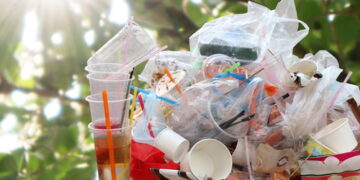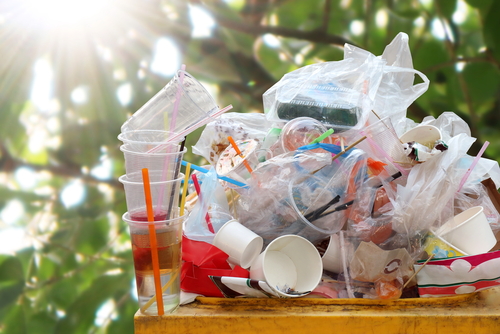Less Plastic, More Peace of Mind
Plastic has become so woven into daily life that we often don’t notice it. It wraps our food, lines our shelves, fills our drawers, and disappears into the bin without a second thought. But what seems convenient in the moment carries long-term consequences for our health, our ecosystems, and future generations.
Creating a plastic-free household isn’t about perfection. It’s about awareness, habit-shifting, and embracing alternatives that are better for you and the planet. The good news? Once you start, it becomes easier—and oddly satisfying—to cut plastic out of your daily routine.
[Ad Banner #1]
Placeholder for the first advertisement.
The Plastic Problem We Live With
Most plastic is designed to last forever—and that’s the issue. Single-use plastics make up over a third of global plastic production, but they’re used for just minutes before becoming waste. Many aren’t recyclable, and even when they are, the majority ends up in landfills, incinerators, or the ocean.
From microplastics in drinking water to toxic chemicals leaching from packaging, plastic isn’t just an environmental concern—it’s a personal one. And it starts at home.
Start with the Obvious Swaps
If you’re just beginning your plastic-free journey, start where you see it most: in the kitchen and on the go.
Kitchen upgrades:
-
Switch to glass or stainless steel containers for leftovers.
-
Ditch plastic wrap for beeswax wraps or silicone lids.
-
Replace plastic baggies with reusable silicone or cloth snack bags.
-
Use bar soap or solid dishwashing blocks instead of bottled dish soap.
On-the-go essentials:
-
Carry a reusable water bottle (stainless steel lasts longest).
-
Keep a cloth tote or compact bag in your car or backpack.
-
Say no to plastic cutlery—bring your own or carry a lightweight travel set.
-
Use a refillable coffee cup or thermos at cafés that allow them.
These simple swaps quickly become second nature and dramatically reduce the most visible plastic waste in your life.
Bulk Shopping & Refill Culture
Grocery stores are ground zero for single-use plastic, but you can sidestep much of it with a shift in how you shop.
Shop bulk when possible:
Bring your own jars or cloth bags to stores that offer dry goods, spices, coffee, and even liquids like oil or vinegar. Many bulk sections now allow you to tare your container and fill exactly what you need—reducing packaging and food waste.
Refill stores are growing:
Refill shops offer cleaning products, personal care items, and pantry staples without packaging. Bring your own bottles, fill up, and return when you need more. It’s not just sustainable—it’s empowering to buy only what you need, in the way you choose.
If you don’t have access to a bulk or refill shop, look for products packaged in cardboard, aluminum, or glass—materials that are easier to recycle or reuse.
[Ad Banner #2]
Placeholder for the second advertisement.
Plastic-Free Cleaning and Personal Care
Cleaning products and toiletries often come wrapped in unnecessary plastic—and are easy areas to swap for better choices.
Home cleaning:
-
Try cleaning tablets that dissolve in water and come in compostable packaging.
-
Use refillable spray bottles made from glass or aluminum.
-
Make your own all-purpose cleaner with vinegar, baking soda, and essential oils.
Personal care:
-
Replace plastic toothbrushes with bamboo alternatives.
-
Use bar soaps, shampoo bars, and conditioner bars.
-
Try toothpaste tablets or powders that come in glass jars.
-
Skip disposable razors and switch to a safety razor with replaceable blades.
These swaps often last longer, contain fewer toxic ingredients, and reduce both your plastic and chemical footprint.
Common Hurdles—and How to Handle Them
Let’s be real: plastic is everywhere. And in some situations, avoiding it entirely just isn’t feasible. That’s okay. The goal is progress, not perfection.
You might find some alternatives cost more upfront, but they’re almost always reusable and longer-lasting, saving money over time. It may take effort to find shops that support bulk or bring-your-own-container policies, but the community around sustainable shopping is growing fast.
And don’t underestimate your influence. Asking local stores to offer plastic-free options sends a signal that demand is shifting.
Make It a Lifestyle, Not a Phase
Creating a plastic-free household doesn’t happen overnight. It’s a journey—one drawer, one purchase, one habit at a time. It helps to keep a “refuse list” to remind yourself of what you no longer bring into your home. Celebrate the small victories: a month without buying bottled water, a kitchen drawer free of disposable cutlery, a bathroom full of refillables.
The less plastic you rely on, the more freedom you feel. Your home becomes lighter, less cluttered, and more aligned with the values of care and intentional living.
Start Where You Are
You don’t need to throw out everything plastic in your home to make a difference. In fact, that’s wasteful. Use what you already have until it wears out—then replace it with something better.
Begin with a single area: your lunch routine, your cleaning cupboard, your shampoo bottle. Swap one thing. Then another. The shift happens over time, and each step brings you closer to a home that reflects your commitment to a cleaner, less disposable world.
























